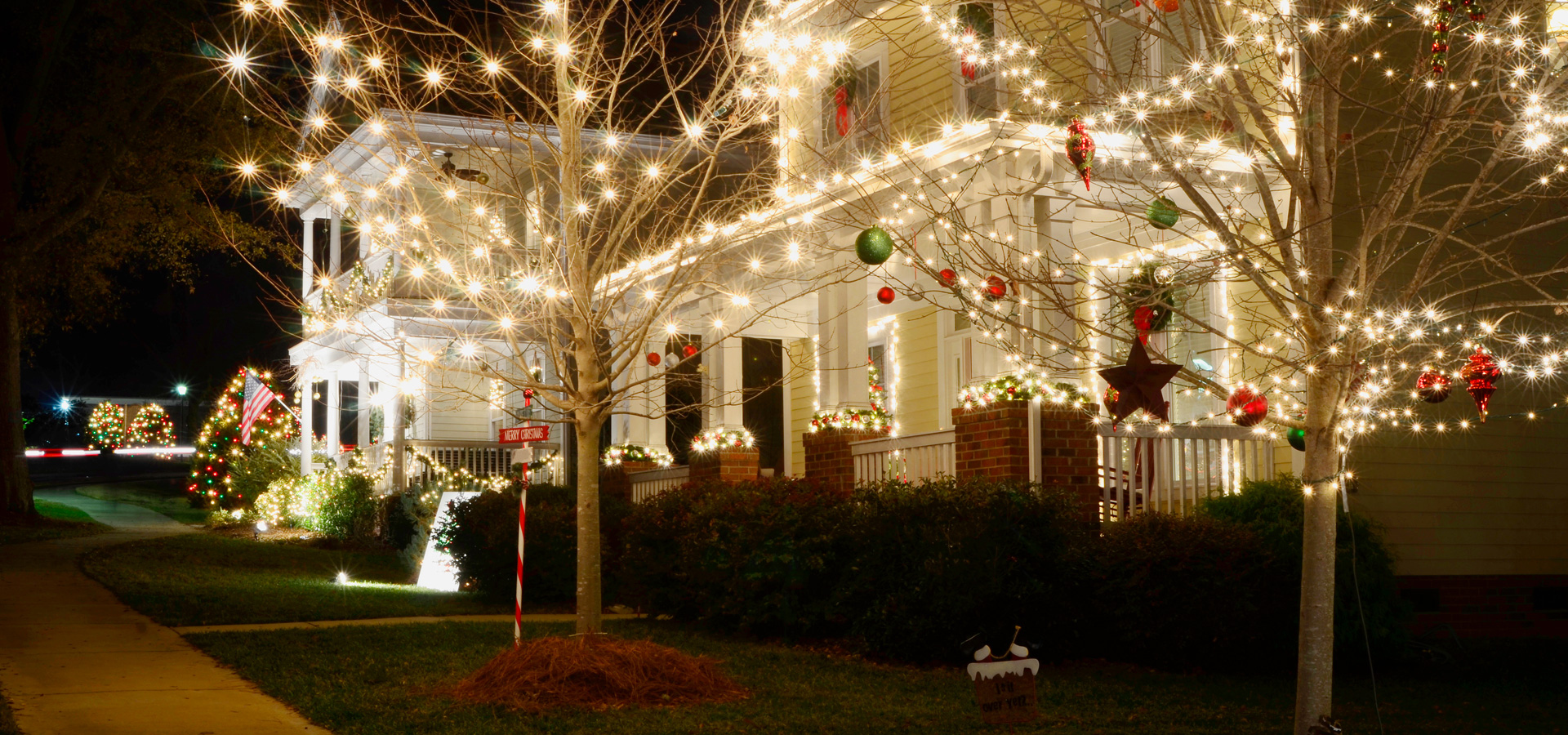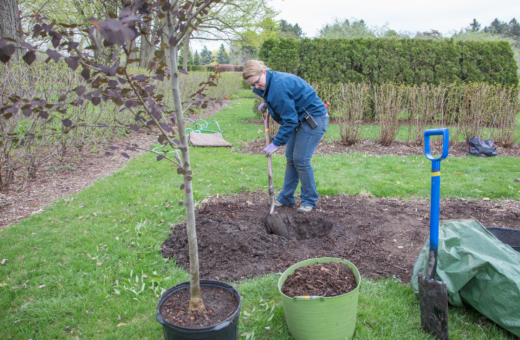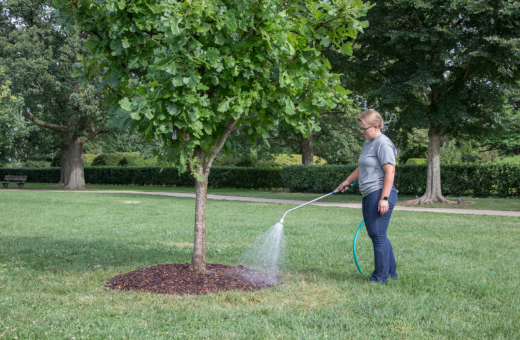How to Take Care of Trees and Shrubs as You Light Your Landscape
As you light up your front yard for the holidays, be careful to do it safely to protect yourself and the shrubs and trees that give your home so much beauty at other times of the year.
The Arboretum staff hangs thousands of lights on its cherished trees at holiday time every winter. Here are some tips from the Arboretum’s Plant Clinic for making your outdoor holiday lighting tree-friendly.
Work on a warm day. Cold makes wood brittle. In warmer weather, the branches of trees and shrubs will be more flexible and less likely to break as you work with them.
Plan to remove lights promptly. Wires that are left wrapped around the trunk or branches of a tree or shrub too long are likely to be forgotten. Eventually, as the branch grows wider, the wires can cut into the bark, slicing the vessels just beneath that are needed to transport water and nutrients. This injury can kill a branch or tree. Rodents also can chew the wires’ insulation over the winter, leading to dangerous short circuits. The Arboretum removes its lights immediately after the holidays each year so the trees are free before spring growth begins in March.
Keep a light touch. Although deciduous trees and shrubs may be bare of leaves in November and December, most already have formed flower and leaf buds to open in spring. Be careful not to damage the buds, and avoid breaking twigs or branches.
Protect the bark. The growing tissue of a tree or shrub is right underneath the bark, so it’s important not to nick or cut the bark when hanging lights. If you need to attach a light wire to a branch, don’t use plastic cable ties or wire twist ties; they can rub or cut into the bark when the plant sways in the wind. Instead, use something flexible and soft, such as strips torn from dark T-shirt fabric. Tie them loosely to give the branch plenty of wiggle room.
Consider the plant’s form. If you’re decorating a low, densely branched evergreen, it may make sense to drape the whole thing in lights. For a tree or shrub with a more open form, hang lights along only the main branches, to suggest the form of the tree.
Pick and choose. Instead of trying to light up every shrub and tree, select those with a good structure that can be highlighted with light. Choose a manageable-sized evergreen that you can decorate entirely, rather than wrapping lights just partway up a tree that is too big.
Use energy-saving LED lights. Make sure the lights, as well as any extension cords, timers, and other electrical apparatus, are UL-listed and rated for outdoor use. Be careful not to overload your outdoor electrical circuit.
Choose green or brown cords. They blend in better with bark and foliage.
Hang lights for easy removal. For example, rather than drape a light string all the way around a big shrub, use one string to light an area within arm’s reach and another string of the same color for the adjacent area. That will make it easier to remove the strings one by one with less pulling and tugging at branches.
Work with a partner. It’s safer to have someone who can hold the ladder steady or hand you things so you’re not tempted to reach too far and fall.
Set a date to take the lights down. Mark the light-removal day on your calendar now so you don’t forget in January.



